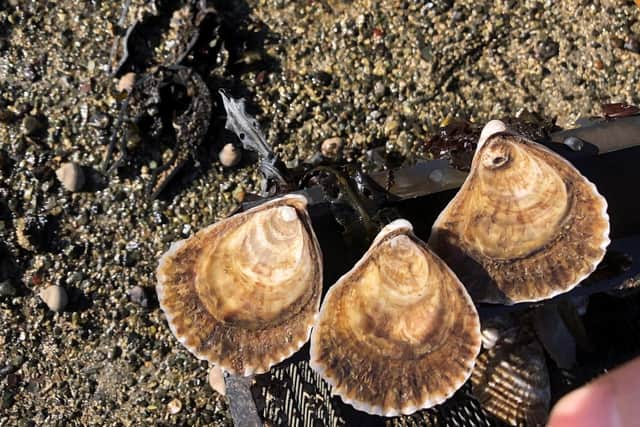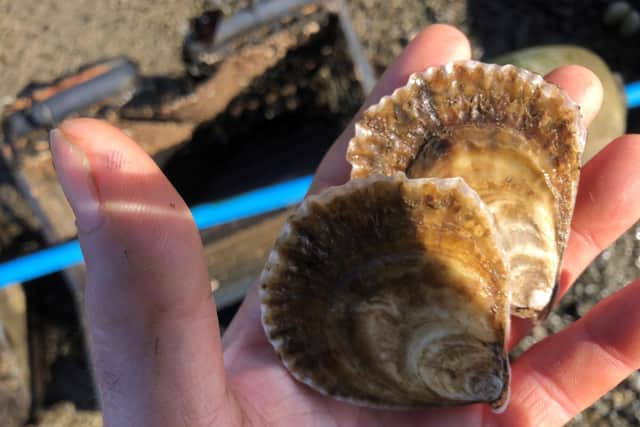Sustainable Scotland: Native Scottish oysters return to west coast seas in new reintroduction scheme
Retailer Water Plus is behind the initiative, which has seen 540 native oysters introduced into the sea off Oban, in Argyll, as part of a trial that aims to improve how water is used and boost the environment.
The project will also explore how the oysters could help organisations with their water use to reduce use of natural resources and carbon emissions linked to all supplies used by businesses, charities and the public sector.
Advertisement
Hide AdAdvertisement
Hide AdThe innovative scheme will involve local school pupils, including classes from Lochaline Primary School in Morvern, who will study how the oysters grow and encourage increased biodiversity in the surrounding area.
A marine scientist will also be involved in the project, helping the schools investigate ’blue carbon capture’ on the seabed and in the oyster shells.
Andy Hughes, chief executive of Water Plus, said: “We’ve started this trial to explore in more detail the benefits and opportunities for organisations from working closer with natural resources, while taking steps to help reduce impacts on the environment.
“It’s also about raising awareness about how we all interact with water, how we can approach this through our relationship with natural resources in the future and to encourage consideration around more options to help our planet.


“Along with restoring oyster levels in the UK, to help habitats and boost biodiversity, we’re working closely with those who know how to care for and encourage the native oysters to flourish – this year and in the future.”
At least 20 native oyster nurseries are being established as part of the initiative and will be located in sea water near the schools involved, allowing pupils to study them.
The health of the oysters will be monitored, with the initial 540 individuals expected to multiply each year.
Each oyster can filter around 200 litres of water every 24 hours – which collectively amounts to around 108,000 litres of water being cleaned each day..
Advertisement
Hide AdAdvertisement
Hide Ad

The ropes attached to the baskets where the oysters grow are made with maize rope, which is recyclable, plastic-free and often attracts seaweed and other marine growth.
Water Plus will also work with the schools involved to help increase awareness of water efficiency and methods of reducing impacts on natural resources.
Youngsters from Lochaline Primary School have already been checking out the newly arrived oysters.
Headteacher Louise Bell said: “With the location of our primary school, we’re actively involving pupils in the natural world and resources we all see and use.
“Seeing the native oysters growing, along with the natural habitats this creates, helps their development and can also have wider impacts to help local communities reduce impacts on the environment too.”
Comments
Want to join the conversation? Please or to comment on this article.
